
Zejtun: The Heartbeat of Southern Malta
Discover Zejtun, Malta's hidden gem, where history, culture, and natural beauty converge in a charming town famous for its olive heritage and vibrant festivals.
Zejtun, a charming town in the south-east of Malta, is a destination brimming with rich history and vibrant culture. Known for its olive trees, from which it derives its name, Zejtun offers a unique blend of the old and the new. Wander through its winding streets and discover ancient churches, charming townhouses, and local markets that give you a glimpse into the daily lives of the Maltese people. One of the main attractions in Zejtun is the magnificent St. Catherine's Parish Church. This stunning example of Baroque architecture is not only a place of worship but also a testament to the town's historical significance. The church's intricate facade and beautiful interior frescoes are sure to leave visitors in awe. Nearby, the Church of St. Gregory, one of the oldest in Malta, offers a quieter, more reflective experience. Zejtun is also home to several annual festivals that celebrate Maltese culture and traditions. The Olive Press Festival, held in late summer, is a must-see event that showcases the town's agricultural heritage. Visitors can enjoy live music, traditional dancing, and of course, sample some of the finest local olives and olive oil. Another highlight is the Zejtun Folk Festival, which brings together local artisans, musicians, and performers for a weekend of cultural immersion. For those interested in history, the Zejtun Roman Villa is an archaeological site that provides a fascinating look into Malta's ancient past. The site includes remnants of Roman-era buildings and artifacts, offering a tangible connection to the island's rich history. Additionally, the surrounding countryside is perfect for leisurely walks or bike rides, allowing visitors to soak in the picturesque landscapes and enjoy the Mediterranean climate.
Local tips in Zejtun
- Visit during the Olive Press Festival in late summer to experience local culture and sample fresh olives.
- Wear comfortable shoes as many of Zejtun's streets are cobblestone and best explored on foot.
- Check out the local markets for unique souvenirs and handmade crafts.
- Take a guided tour of the Zejtun Roman Villa for an in-depth look at Malta's ancient history.
- Enjoy a leisurely walk or bike ride in the surrounding countryside to fully appreciate the town's natural beauty.
Zejtun: The Heartbeat of Southern Malta
Zejtun, a charming town in the south-east of Malta, is a destination brimming with rich history and vibrant culture. Known for its olive trees, from which it derives its name, Zejtun offers a unique blend of the old and the new. Wander through its winding streets and discover ancient churches, charming townhouses, and local markets that give you a glimpse into the daily lives of the Maltese people. One of the main attractions in Zejtun is the magnificent St. Catherine's Parish Church. This stunning example of Baroque architecture is not only a place of worship but also a testament to the town's historical significance. The church's intricate facade and beautiful interior frescoes are sure to leave visitors in awe. Nearby, the Church of St. Gregory, one of the oldest in Malta, offers a quieter, more reflective experience. Zejtun is also home to several annual festivals that celebrate Maltese culture and traditions. The Olive Press Festival, held in late summer, is a must-see event that showcases the town's agricultural heritage. Visitors can enjoy live music, traditional dancing, and of course, sample some of the finest local olives and olive oil. Another highlight is the Zejtun Folk Festival, which brings together local artisans, musicians, and performers for a weekend of cultural immersion. For those interested in history, the Zejtun Roman Villa is an archaeological site that provides a fascinating look into Malta's ancient past. The site includes remnants of Roman-era buildings and artifacts, offering a tangible connection to the island's rich history. Additionally, the surrounding countryside is perfect for leisurely walks or bike rides, allowing visitors to soak in the picturesque landscapes and enjoy the Mediterranean climate.
When is the best time to go to Zejtun?
Iconic landmarks you can’t miss
Il-Bejta
Discover the historical charm and breathtaking views of Il-Bejta, a landmark that embodies the essence of Marsaskala's rich heritage.

Għaqda Banda Żejtun
Discover the heart of Maltese culture at Għaqda Banda Żejtun, a lively club offering authentic music and unforgettable local experiences.

Bisqallin
Discover Bisqallin in Żejtun: A historical landmark showcasing Malta's rich cultural heritage and architectural beauty.
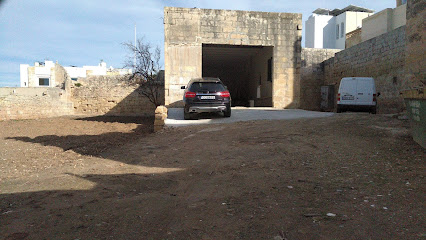
Uffiċċju Parrokkjali taż-Żejtun
Explore the cultural heart of Żejtun at Uffiċċi Parrokkjali taż-Żejtun, where history, tradition, and local spirit come alive.
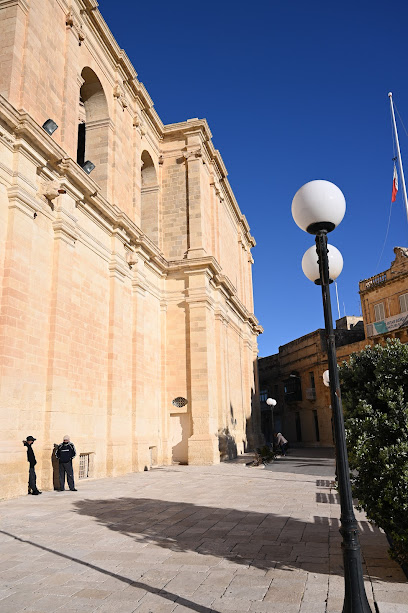
St Clement's Chapel, Żejtun
Discover the tranquil beauty of St Clement's Chapel in Żejtun, Malta, a historical gem offering a serene escape into the island's spiritual heritage.

Casa Perellos
Explore Casa Perellos in Żejtun, Malta - a stunning historical site showcasing Baroque architecture and rich cultural heritage.

WW2 Pillbox
Explore the WW2 Pillbox in Marsaskala, Malta - a historical landmark revealing the island's wartime heritage amidst stunning coastal views.

Statue of St Catherine
Discover the serene Statue of St. Catherine in Żejtun, Malta, a perfect blend of spirituality, history, and artistic beauty.
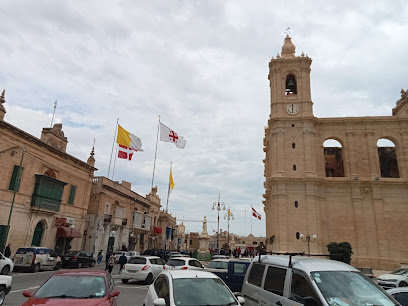
Roman Villa Archaeological Site
Explore the Roman Villa Archaeological Site in Żejtun, Malta, where ancient history meets stunning artistry in a captivating outdoor setting.

Blessed Sacrament Oratory
Discover the Blessed Sacrament Oratory in Żejtun, Malta, where spirituality and stunning architecture create a serene escape for every traveler.

Testaferrata Gate
Explore Testaferrata Gate: A Historic Landmark in Żejtun, Malta, Showcasing Architectural Elegance and Rich Heritage.

Aedis Danielis
Explore the historical allure of Aedis Danielis in Żejtun, Malta, where architectural beauty and rich cultural heritage await every visitor.
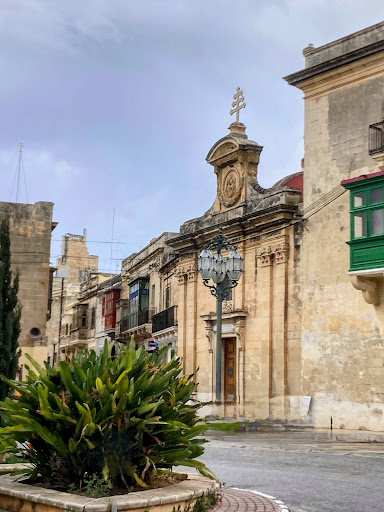
December 13th Square
Experience the vibrant local culture and historical charm at December 13th Square in Zejtun, Malta - a delightful spot for tourists.

Dom Mintoff Monument
Explore the historical significance of the Dom Mintoff Monument in Tarxien, a tribute to Malta's political evolution and cultural heritage.
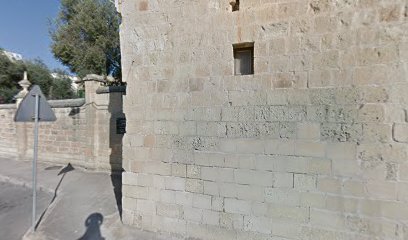
Testaferrata Tower
Uncover the historical significance of Testaferrata Tower in Żejtun, Malta, a must-visit landmark showcasing the island's rich past.

Unmissable attractions to see
Upper Barrakka
Experience breathtaking views and rich history at Upper Barrakka Gardens - Valletta's serene oasis overlooking the Grand Harbour.

Triton Fountain
Explore Triton Fountain in Floriana, Malta - a breathtaking blend of art, culture, and natural beauty in the heart of the city.

St. John's Co-Cathedral
Discover the artistic brilliance and historical significance of St. John's Co-Cathedral in Valletta, Malta's Baroque jewel.

City Gate
Explore the magnificent City Gate in Valletta, a stunning blend of modern architecture and rich Maltese history at the heart of the capital.

Lower Barrakka
Explore the tranquil beauty and rich history of Lower Barrakka, Valletta's hidden gem with stunning harbor views and serene gardens.

Blue Grotto
Explore the breathtaking Blue Grotto in Malta, a stunning natural wonder featuring vibrant blue waters and rich historical significance.

National War Museum - Fort St Elmo
Discover the historical significance of Fort St Elmo in Valletta, Malta – a captivating journey through military heritage and stunning coastal views.

Hagar Qim Temple
Discover the ancient wonders of Hagar Qim Temple, a UNESCO World Heritage Site in Malta, where history and breathtaking views converge.
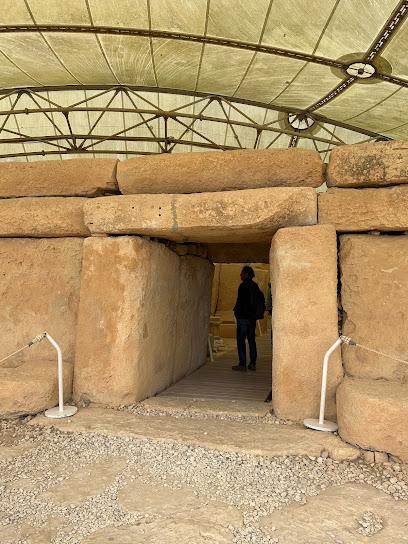
Fort St. Angelo
Discover the historic Fort St. Angelo in Birgu, Malta, a magnificent fortress offering breathtaking views and rich cultural heritage.

Marsaxlokk Harbour
Experience the vibrant atmosphere of Marsaxlokk Harbour, Malta's picturesque fishing village known for colorful boats, fresh seafood, and stunning coastal views.

Valletta Ferry Service - Cospicua
Explore Malta's stunning coastline with the Valletta Ferry Service in Cospicua, connecting you to historic cities and breathtaking views.

National Museum of Archaeology
Discover the ancient treasures of Malta at the National Museum of Archaeology, a captivating destination in Valletta showcasing the island's rich history.

Tarxien Temples
Explore the Tarxien Temples, a UNESCO World Heritage site in Malta, showcasing prehistoric architecture and intricate stone carvings.

Casa Rocca Piccola
Explore the rich history and exquisite architecture of Casa Rocca Piccola, a must-see historical museum and landmark in Valletta, Malta.

The Pub
Experience the vibrant atmosphere of The Pub in Valletta, where sports, drinks, and a lively crowd come together for a memorable night out.

Essential places to dine
La Nostra Padrona
Experience authentic Mediterranean flavors at La Nostra Padrona - where fresh seafood meets breathtaking views in Marsaxlokk.

Carrubia | Restaurant - Pizzeria
Experience authentic Maltese and Italian cuisine at Carrubia Restaurant - Pizzeria in charming Marsaxlokk.

T'Annamari Restaurant
Discover T'Annamari Restaurant: A Must-Visit Italian Gem in Marsaxlokk Offering Exquisite Seafood and Mediterranean Delights.

Zeffie's Bistro & Pizzeria
Experience the best of Maltese and Italian cuisine at Zeffie's Bistro & Pizzeria in Žabbar – where every meal tells a story.

Tartarun Restaurant
Discover Tartarun Restaurant in Marsaxlokk – where fresh seafood meets breathtaking views of Malta's charming coastline.

Ta' Victor
Experience authentic Maltese cuisine at Ta' Victor in Marsaxlokk - where every dish tells a story of tradition and flavor.

CFC Ghaxaq (Crispy flavoured chicken)
Savor the crispy flavors of CFC Ghaxaq in Żejtun, Malta – where delicious chicken meets warm hospitality.

Ir-Rizzu
Discover Ir-Rizzu in Marsaxlokk - A delightful dive into authentic Maltese flavors with breathtaking harbor views.

Mare Bello
Discover Mare Bello in Marsaxlokk - where fresh Mediterranean flavors meet breathtaking waterfront views.

Chiaro Trattoria & Grill
Experience authentic Maltese cuisine at Chiaro Trattoria & Grill in Żejtun - where tradition meets flavor in every dish.

Istanbul Kebab House Ghaxaq
Experience authentic Turkish flavors at Istanbul Kebab House Ghaxaq - where every meal is a delightful journey through Turkish cuisine.

UNICO Restaurant
Discover innovative Mediterranean cuisine at UNICO Restaurant in Marsaxlokk, where fresh seafood meets stunning harbor views.
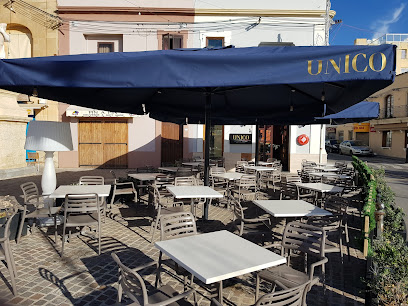
Rising Sun Bar
Experience authentic Maltese cuisine at Rising Sun Bar in Marsaxlokk, where stunning sea views meet warm hospitality.

Four T's
Discover the delicious offerings at Four T's in Ħal Għaxaq—where affordability meets authentic Maltese flavors.

Roti indian cuisine
Experience authentic Indian flavors at Roti Indian Cuisine in Marsaskala - where every meal is a celebration of spices and tradition.
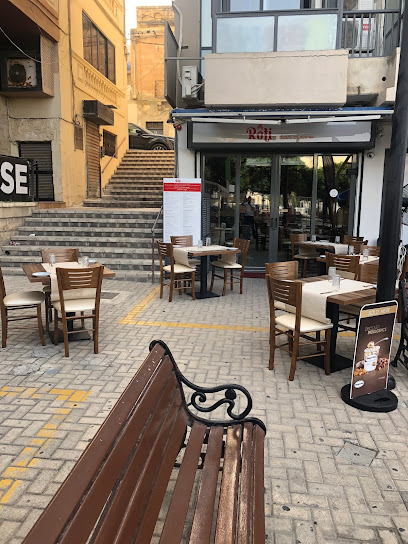
Markets, malls and hidden boutiques
PET ZONE Petshop Zejtun
Discover PET ZONE in Żejtun, your one-stop shop for all pet supplies, loving care, and a welcoming atmosphere for pet enthusiasts.

Biggermen Clothing
Unveil your style at Biggermen Clothing in Żejtun, where quality meets fashion in a charming shopping destination.

The Convenience Shop Zejtun 1
Explore local flavors and essentials at The Convenience Shop in Zejtun, your go-to grocery store for authentic Maltese products.

DISCOUNT DEPOT CASH & CARRY
Shop local and international products at Discount Depot Cash & Carry in Żejtun, Malta, your go-to supermarket for all your travel essentials.

Honey Point Confectionery
Discover the sweetest side of Żejtun at Honey Point Confectionery, where every treat is a delightful experience waiting to be savored.

The Convenience Shop, Zejtun3
Discover the heart of local shopping at The Convenience Shop in Żejtun, where every visit is a taste of Malta's daily life.

Home Plus
Discover unique home goods and decor at Home Plus in Żejtun, Malta, a treasure trove for quality furnishings and local artisan products.

Mum n Me
Discover quality baby clothing, maternity wear, and toys at Mum n Me, the ultimate family shopping destination in Żejtun, Malta.

The Stationer
Discover a haven for creativity at The Stationer in Żejtun, Malta, filled with quality stationery and unique art supplies for every enthusiast.

JENNIFER FASHION
Explore Żejtun's Fashion Scene at Jennifer Fashion - Stylish Clothing for Every Occasion Awaits!

Nello Hardware Store
Explore Nello Hardware Store in Żejtun: Your one-stop shop for all DIY needs, offering quality tools and friendly service in a charming local atmosphere.

Debbie's Baby Centre
Explore Debbie's Baby Centre in Żejtun, Malta, for quality baby products and a helpful shopping experience tailored for new parents.

Maypole Zejtun
Experience local flavors and convenience at Maypole Zejtun, your go-to stop in the heart of Żejtun, Malta.
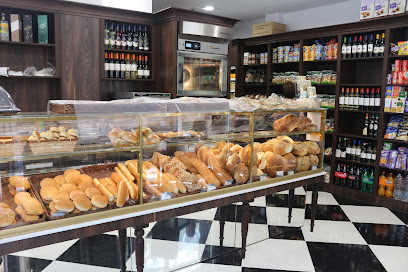
A La Mode
Discover the latest fashion trends at A La Mode, Żejtun's premier clothing store offering a unique shopping experience for style-savvy tourists.

Rita Ironmongery
Explore Rita Ironmongery in Żejtun for quality hardware and expert advice on your DIY projects and home improvements.
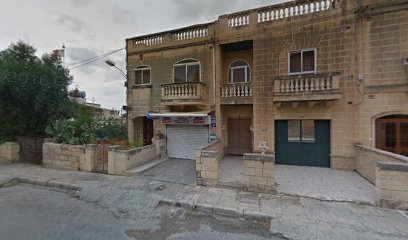
Essential bars & hidden hideouts
Summer Nights Pub & Grill
Experience the best of Marsaskala dining at Summer Nights Pub & Grill, where delicious steaks and vibrant drinks meet stunning coastal views.

IL-Karrettun Pub & Grill
Discover IL-Karrettun Pub & Grill in Marsaskala, Malta – a cozy pub offering delectable dishes and a lively atmosphere perfect for unwinding.

Cool Waters
Experience the enchanting atmosphere at Cool Waters, a must-visit bar in Marsaskala, Malta, offering delightful drinks and stunning coastal views.

New Wave Kiosk
Discover the inviting New Wave Kiosk in Żejtun, Malta, where refreshing drinks and light snacks await in a charming atmosphere.
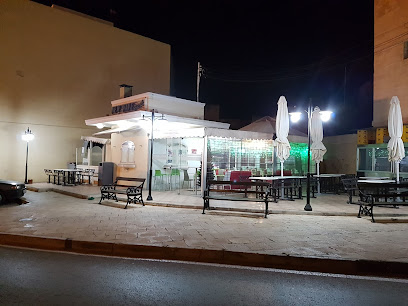
Crazy Horse Bar
Discover the lively nightlife and local charm at Crazy Horse Bar in Ħaż-Żabbar, where great drinks and vibrant atmosphere await.

Il Kantina ta' Katarin, Wine
Experience the authentic flavors of Malta at Il Kantina ta' Katarin, a charming restaurant in Żejtun offering traditional dishes and local wines.
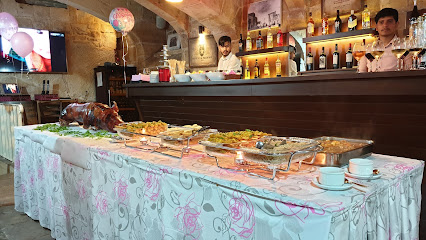
Roadside Café & Resto’
Experience delicious fast food in a charming setting at Roadside Café & Resto’ in Żejtun, Malta – a must-visit for every traveler!

SixteenSeven Sports Bar & Grill
Experience the best of grilled cuisine and live sports at SixteenSeven Sports Bar & Grill in Fgura, where flavor meets excitement.

Ċappu Bar
Experience the vibrant atmosphere and local flavors at Cappu Bar in Żejtun, the perfect spot for drinks and delightful appetizers.

Corinthians Football Club
Discover the lively atmosphere at Corinthians Football Club in Żejtun, where football, local drinks, and community spirit come together.

Code Nine
Experience the vibrant nightlife of Marsaxlokk at Code Nine, where great music, delicious cocktails, and a lively atmosphere await you.

Tico Tico Snack Bar
Experience the flavors of Malta at Tico Tico Snack Bar in Żejtun, where delicious snacks and refreshing drinks await in a friendly atmosphere.

Black Jack Corinthians Football Ground
Discover the heart of local football culture at Black Jack Corinthians Football Ground in Żejtun, a vibrant venue for sports and culinary delights.

Żejtun Racing Pigeon Club
Discover the heartbeat of Żejtun at the Racing Pigeon Club, where tradition and community come together in a unique cultural experience.

The Greatest
Experience the authentic taste of Italy at The Greatest in Żejtun, where fresh ingredients meet delightful pizza creations.
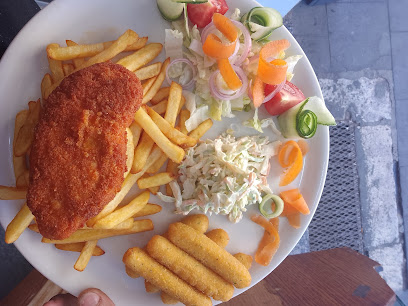
Local Phrases
-
- HelloMerħba
[mer-hba] - GoodbyeĊaw
[chaw] - YesIva
[ee-va] - NoLe
[leh] - Please/You're welcomeJekk jogħġbok
[yekk yoj-bok] - Thank youGrazzi
[grat-si] - Excuse me/SorrySkuzani
[skoo-za-nee] - How are you?Kif int?
[keef int] - Fine. And you?Ġud. U int?
[jood. oo int] - Do you speak English?Titkellem bl-Ingliż?
[tit-kel-lem bl ing-liz] - I don't understandMa nifhimx
[ma nif-heemsh]
- HelloMerħba
-
- I'd like to see the menu, pleaseNixtieq inara l-menu, jekk jogħġbok
[nix-tyek ee-nara l-menyoo, yekk yoj-bok] - I don't eat meatMa niekolx laħam
[ma nyek-olsh la-ham] - Cheers!Saħħa!
[sa-ha] - I would like to pay, pleaseNixtieq inħallas, jekk jogħġbok
[nix-tyek in-hal-las, yekk yoj-bok]
- I'd like to see the menu, pleaseNixtieq inara l-menu, jekk jogħġbok
-
- Help!Għajjat!
[ay-yat] - Go away!Mur
[moor] - Call the Police!Ibqa' idħol fil-pulizija!
[ib-ka id-hol fil-poo-lit-zee-ya] - Call a doctor!Ibqa' idħol tabib!
[ib-ka id-hol ta-beeb] - I'm lostInħallas
[in-hal-las] - I'm illJien imdejjaq
[yeen im-dey-yak]
- Help!Għajjat!
-
- I'd like to buy...Nixtieq inixtri...
[nix-tyek ee-nis-tree] - I'm just lookingQed nara biss
[kwed na-ra beess] - How much is it?Kemm jiswa?
[kem yis-wa] - That's too expensiveDan huwa wisq sħiħ
[dan hoo-wa wees-sh s-hee] - Can you lower the price?Tista' tgħallem il-prezz?
[tis-ta t-all-em il-prezz]
- I'd like to buy...Nixtieq inixtri...
-
- What time is it?X'ħin hi?
[sh-heen hee] - It's one o'clockHuwa l-ewwel siegħa
[hoo-wa l-ew-wel see-ga] - Half past (10)Nofs is-siegħa (10)
[noffs is-see-ga] - MorningFilgħodu
[fil-gho-du] - AfternoonWaranofsinhar
[wa-ra-no-fsi-nhar] - EveningFillejl
[fil-leel] - YesterdayIlbieraħ
[il-bi-rahh] - TodayIllum
[il-lum] - TomorrowGħada
[a-da] - 1Waħda
[wa-hda] - 2Tnejn
[tnine] - 3Tlieta
[tlieta] - 4Erba'
[er-ba] - 5Ħamsa
[hamsa] - 6Sitta
[sit-ta] - 7Sebgħa
[seb-gha] - 8Tmienja
[tmi-en-ya] - 9Disgħa
[dis-gha] - 10Għaxra
[a-ra]
- What time is it?X'ħin hi?
-
- Where's a/the...?Fejn hemm...
[feyn hemm] - What's the address?X'hu l-indirizz?
[sh-hu l-in-di-ri-tz] - Can you show me (on the map)?Tista' turini (fuq il-mappa)?
[tis-ta tu-ri-nee fuq il-map-pa] - When's the next (bus)?Meta se jasal il-ġej...
[me-ta se ya-sal il-jay] - A ticket (to ....)Biljett (għall...)
[bil-yet tal]
- Where's a/the...?Fejn hemm...
History of Zejtun
-
The origins of Żejtun can be traced back to the Bronze Age, with archaeological evidence suggesting early settlers occupied the area as early as 1500 BC. The discovery of prehistoric pottery and tools in the area provides insight into the life of these early inhabitants.
-
Żejtun saw significant development during the Phoenician period, around the 8th century BC. The Phoenicians, known for their maritime prowess, established trade routes and settlements across the Mediterranean, including Żejtun. Excavations have unearthed Phoenician artifacts, such as pottery and inscriptions, indicating their presence and influence in the area.
-
During the Roman period, Żejtun became an important agricultural hub, benefiting from the fertile land and strategic location. The Romans introduced advanced farming techniques and constructed villas in the region. The remains of Roman structures and agricultural tools discovered in Żejtun highlight the prosperity of this era.
-
In the medieval period, Żejtun was mentioned in various historical documents, including the 1241 census of the Kingdom of Sicily. The town's name is believed to have derived from the Arabic word 'zaytun,' meaning 'olive,' reflecting the area's rich olive cultivation. The medieval church of St. Mary, built during this time, still stands as a testament to Żejtun's historical significance.
-
During the Great Siege of Malta in 1565, Żejtun played a crucial role in the defense against the Ottoman Empire. The town's strategic location and its inhabitants' resilience were instrumental in resisting the siege. Many locals participated in the defense, and their efforts are commemorated in local folklore and historical records.
-
The 17th and 18th centuries marked a period of architectural and cultural flourishing in Żejtun. The construction of the parish church of St. Catherine, a Baroque masterpiece, began in 1692 and was completed in 1728. The church's intricate façade and richly decorated interior reflect the artistic achievements of this period.
-
Under British rule, which began in the early 19th century, Żejtun continued to develop economically and socially. The British introduced new agricultural practices and infrastructure improvements. The construction of schools and public buildings during this time laid the groundwork for modern Żejtun.
-
Żejtun, like the rest of Malta, endured significant challenges during World War II. The town was subjected to aerial bombings due to its proximity to strategic military targets. Despite the destruction, the community's resilience shone through, and post-war reconstruction efforts helped restore Żejtun to its former glory.
-
Today, Żejtun is a vibrant town that seamlessly blends its rich historical heritage with modern amenities. The annual Żejt iż-Żejtun festival celebrates the town's olive-growing tradition, while various cultural events and historical sites attract visitors from around the world. The town's commitment to preserving its history ensures that future generations can continue to explore and appreciate Żejtun's unique legacy.
Zejtun Essentials
-
Zejtun is located in the southeastern part of Malta. The nearest international airport is Malta International Airport (MLA), which is approximately 6 kilometers away. From the airport, you can take a taxi, a rental car, or a direct bus (Route X4) to Zejtun. The journey typically takes around 20 minutes. Alternatively, you can arrange for a private transfer or use ride-sharing apps.
-
Zejtun is well-connected by Malta's public transport system. Local buses are frequent and reliable, making it easy to travel within Zejtun and to nearby towns. Renting a car is another convenient option for exploring the area at your own pace. Taxis and ride-sharing services are also available. For shorter trips within Zejtun, walking or cycling can be enjoyable ways to experience the town.
-
The official currency in Malta is the Euro (EUR). Credit cards are widely accepted in hotels, restaurants, and shops. However, it is advisable to carry some cash for smaller establishments and local markets. ATMs are available throughout Zejtun for cash withdrawals. It is a good idea to notify your bank of your travel plans to avoid any issues with card transactions.
-
Zejtun is generally a safe destination for tourists. Crime rates are low, but it is always wise to take standard precautions. Avoid leaving valuables unattended and be cautious in crowded places to prevent pickpocketing. There are no specific high-crime areas targeting tourists in Zejtun, but staying vigilant and aware of your surroundings is always recommended.
-
In case of emergency, dial 112 for immediate assistance. Zejtun has a local police station and medical facilities. It is recommended to have travel insurance that covers medical emergencies. For minor health issues, there are pharmacies in the town where you can purchase over-the-counter medications. Keep a list of important contact numbers and your insurance details handy.
-
Fashion: Do dress modestly, especially when visiting religious sites. Avoid wearing revealing clothing. Religion: Do respect local customs and traditions. Always cover your shoulders and knees when entering churches. Public Transport: Do be respectful and give up your seat to elderly passengers. Don’t eat or drink on public transport. Greetings: Do greet people with a friendly 'Hello' or 'Bonġu' (Good Morning in Maltese). A handshake is also common. Eating & Drinking: Do try local delicacies and accept food offerings graciously. Don’t refuse hospitality, as it is considered impolite.
-
To experience Zejtun like a local, visit the town's traditional bakeries for fresh Maltese bread and pastries. Explore the local markets to buy fresh produce and handmade crafts. Engage with locals, as they are often friendly and willing to share stories about the town's history and culture. Don't miss the annual 'Festa' celebrations, which include parades, fireworks, and traditional music. Take a leisurely stroll through the narrow streets and admire the historical architecture.
Trending Landmark in Zejtun
Nearby Cities to Zejtun
-
Things To Do in Marsaxlokk
-
Things To Do in Tarxien
-
Things To Do in Paola
-
Things To Do in Marsaskala
-
Things To Do in Birgu
-
Things To Do in Marsa
-
Things To Do in Valletta
-
Things To Do in Zurrieq
-
Things To Do in Mqabba
-
Things To Do in Gzira
-
Things To Do in Sliema
-
Things To Do in St. Julian's
-
Things To Do in Mdina
-
Things To Do in Rabat
-
Things To Do in Qawra








